Part 01 of our grand tour through central Japan took us to Toyoma, a city that revealed not only castles but a trove of classic Toyotas. After prying ourselves away, we headed inland.
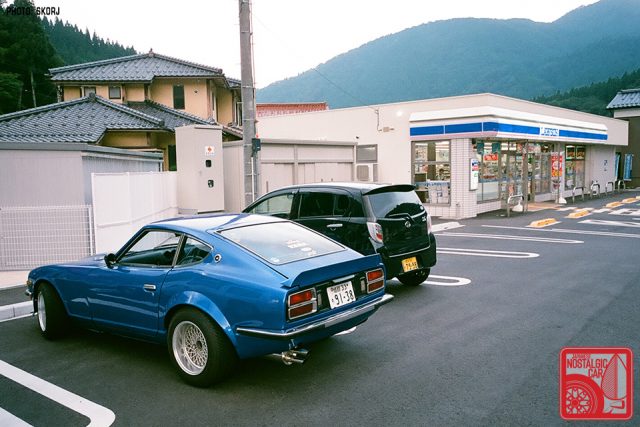
From Toyama-city’s historic port district we drove further south, leaving the coast for a short while. Pausing at a konbini, we shared a few cool drinks with a Fairlady Z, its refinished blue paint, large silver Enkei mesh wheels, and rear-only flares giving it a hot rod look.
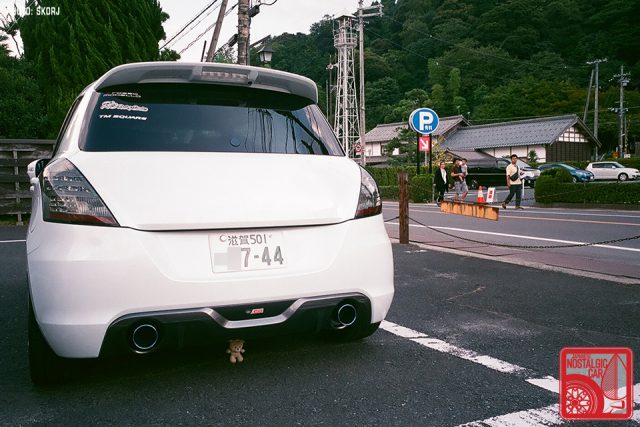
On the other side of the car park, a de-badged Suzuki Swift was carrying a stuffed toy in a curious position. Unfortunately by the looks of his paws, the poor little bear was having a hard time keeping up. This model Swift has seen a substantial increase in the number of modified examples running about all over Japan, as aftermarket parts are both freely available and effective in helping them live up to their name.

Joining National Route 476 to travel further away from the coast, we came across more old Toyotas in a field of neglected sedans slowly coming apart in the harsh mountain weather.
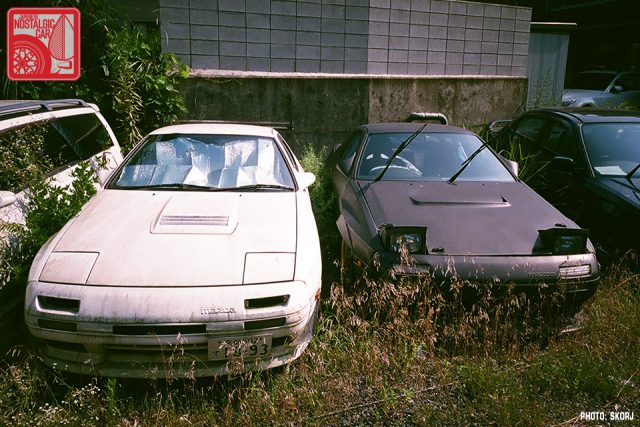
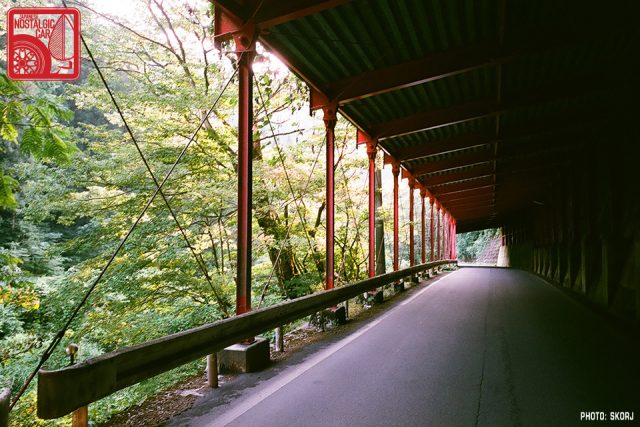
As the road climbed further into the mountains a collection of languishing Europeans were accompanied by two Mazda RX-7s. Through a number of “rock tunnels” designed to keep minor bits of mountain off of passing traffic, the road changed from asphalt to hand-laid bricks.
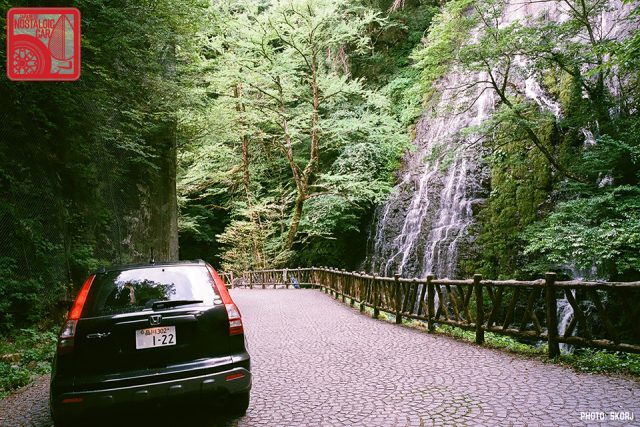
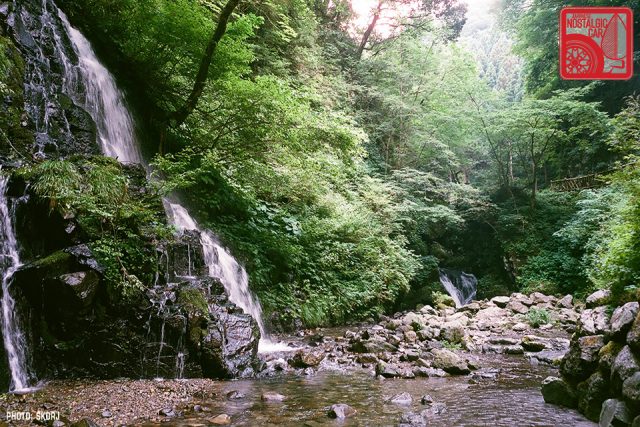
Upon turning one corner, we came across Ryusouga Falls, which we later learned was listed in some places as one of the top 100 waterfalls in Japan. On a hot day, wading into the cold mountain water pools under the falls was a great way to cool off.

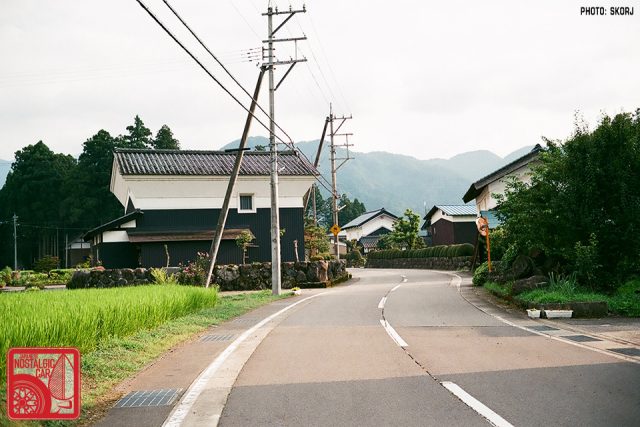
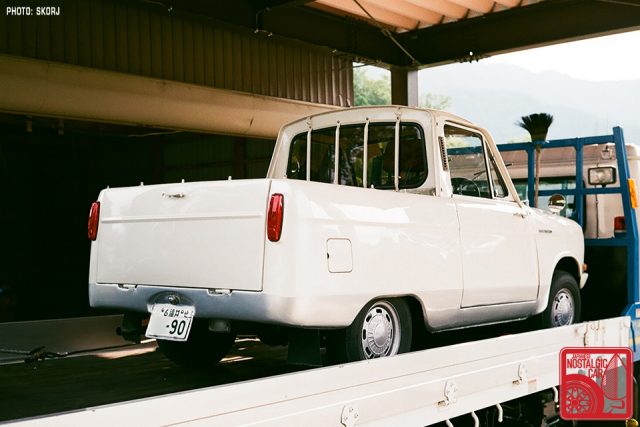
With the sun going down, we made our way down to the next valley on typically smooth Japanese roads. We stopped to chat with a local who was returning from a car show with his Mitsubishi Minica truck, carried ceremoniously on a flatbed.

As luck would have it, we were just in time to catch the falling light across the rice fields at a small local shrine, too. Traveling west down the coast through Ishikawa and Fukui Prefectures, our next destination was Tsuruga City on the coast for an overnight stay.
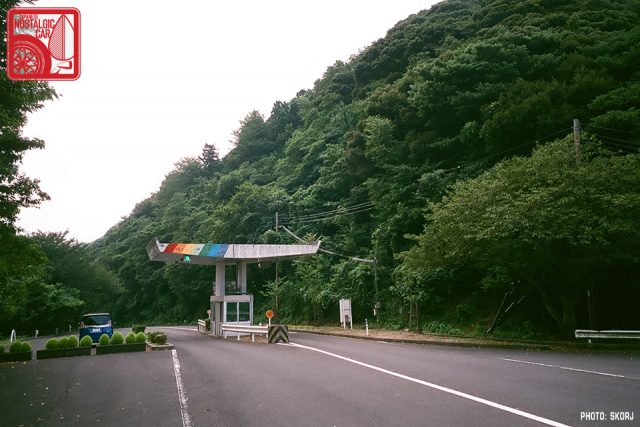
Our location was selected carefully, as the following day we planned to drive another of Japan’s famed touge, this time the 20-kilometer coastal run of the Rainbow Line around the spectacular five lakes of Mikata, formed by a volcanic eruption in 1888.
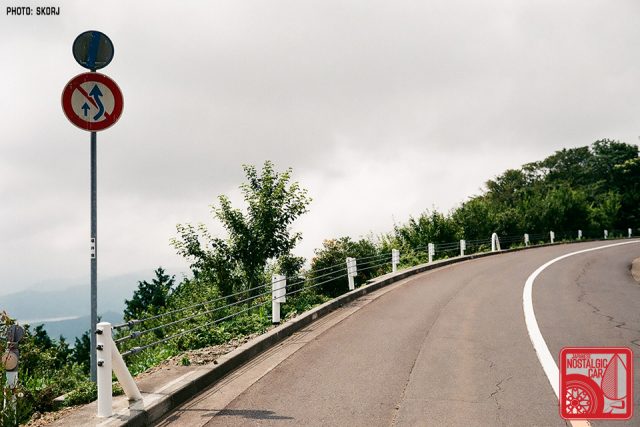

The tollbooth attendant was still having his morning coffee as he cheerfully greeted us, with both a “good day for a drive” and a “please be careful”. As it was early morning, as well as a Monday, we had the road to ourselves.


Taking full advantage of this, we stopped to enjoy not only the views from the roadside vantage points, but were also able to slow tour many of the sections to take in the view and imagine what it would be like to drive in something a bit smaller and agile.
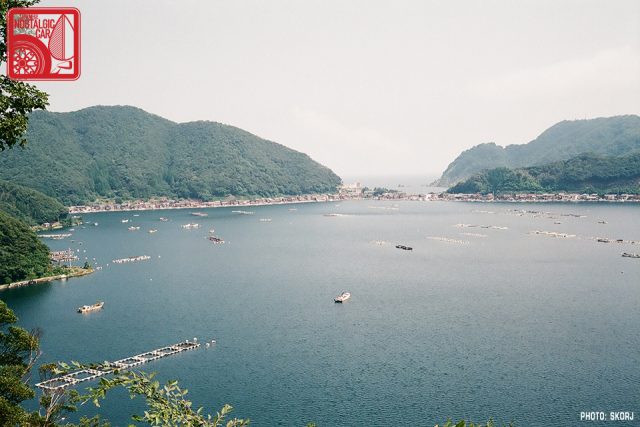
Climbing to over 390 meters in a short distance provides for breathtaking views from both sides of the road, out over the valleys and lakes of the area. The challenging switchbacks and corners provided a continual series of vistas where we could see the combination of pleasure and fishing boats on the waters below.
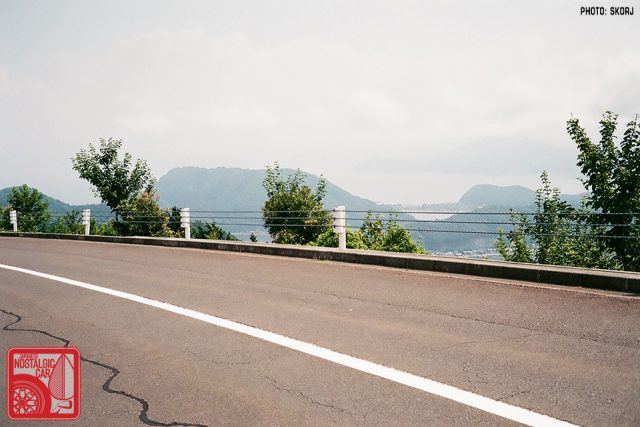
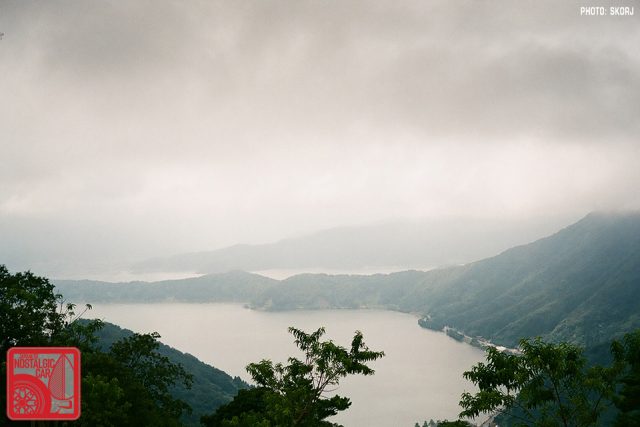
Due to its proximity to the sea, limited in-flow and deep floors, the largest of the lakes, called Suigetsu-ko, provides a unique marine ecosystem combining fresh, lightly salted, and millennia-old brackish depths. Similarly, due to their varying levels of salinity, the five likes all vary in color under the same light. In Japan, they’re called simply the Goshiki Numa, or Five Colored Lakes.
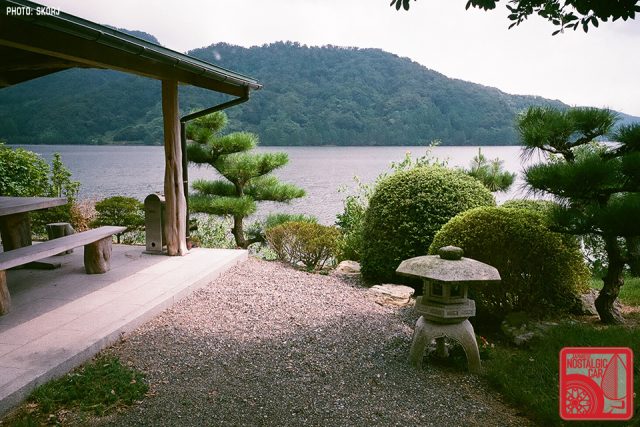
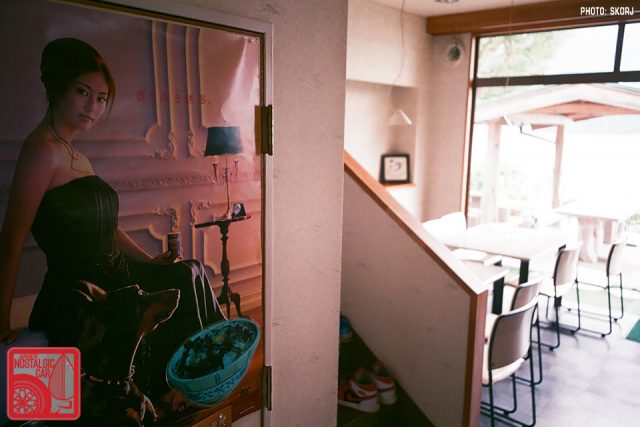
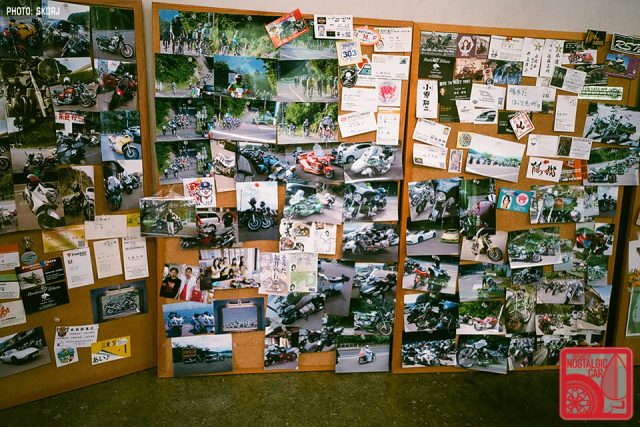
Like many touge, it comes with a rest stop popular with motorcyclists and drivers alike. In this case, a small restaurant and cafe on the southern end of Mikata-ko was located right on the shore, with a traditional garden to enjoy the view. Inside, its walls were decorated with posters of Fujiwara Noriko selling coffee, as well as boards covered in snaps of some of the cars and bikes that frequent the stop, including at least one Toyota 2000GT.
The Rainbow Line is in fact on the list of Japan’s 157 best touge roads, as curated by Toyota when the launched the 86. The video above is a great summary of the drive.
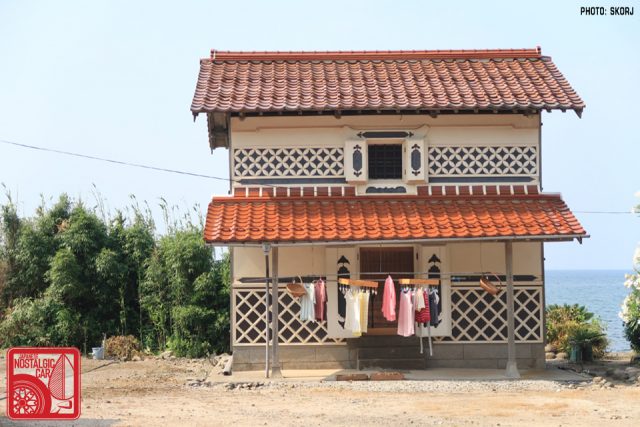
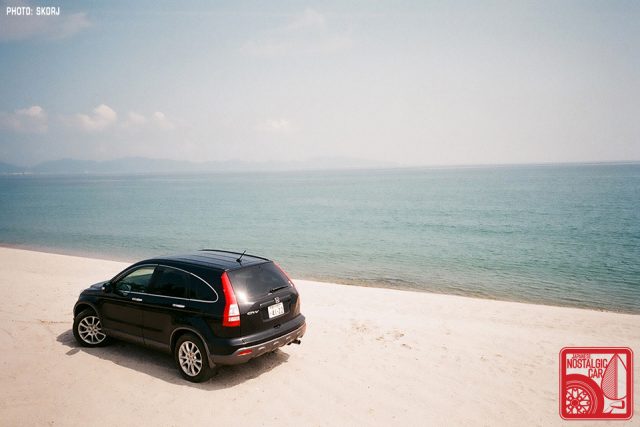
Our next destination was Tottori, which took us further down the coast along the Tajima Coastal Road and added another classic touge to the trip. Along the way, we enjoying the seaside views of period kura (storehouses) and spent some time exploring the famous sand hills and beaches of the area.
Here, again, is Toyota’s take.
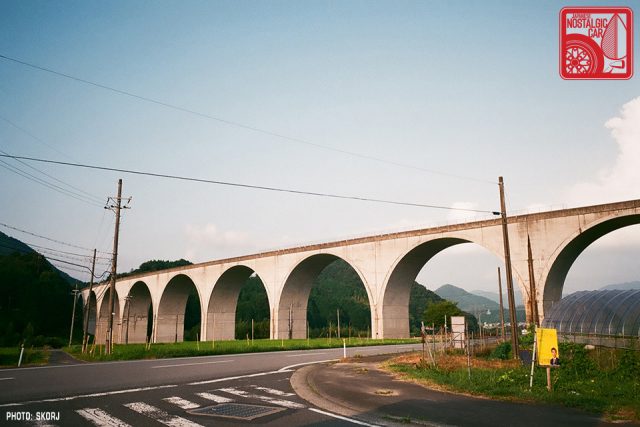
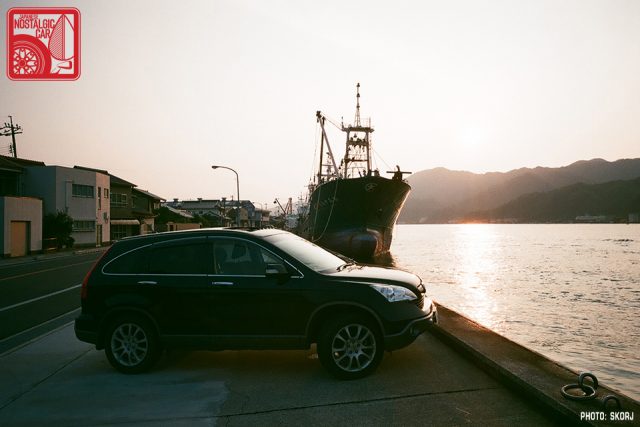
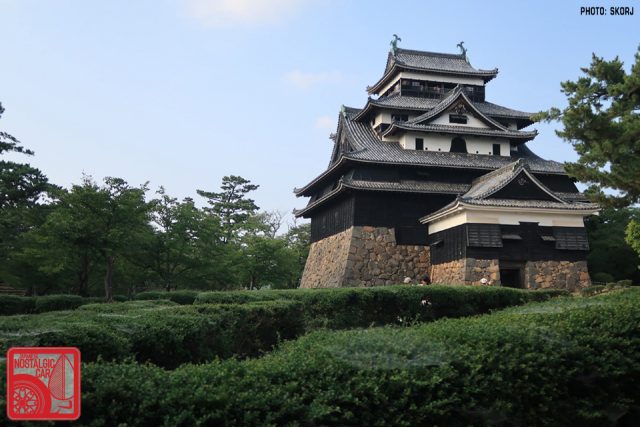
With a road distance of well over 1000km already from home, we decided Matsue-city, and its castle, was to be our turn-around point for the journey home. In addition to a Coast Guard station, Matsue-city has one of the 12 remaining original castle keeps, built in 1607.

On the way out of town, a Showa-era taxi yard fronting the seaside stopped us for a must-have photo. The overall design, font, and colors were an excellent representation of post-war “modern” Japan. One could easily imagine the carefully matched Toyopet or Hino Contessa taxis running in and out as they ferried visitors between the station and local seaside ryokan.

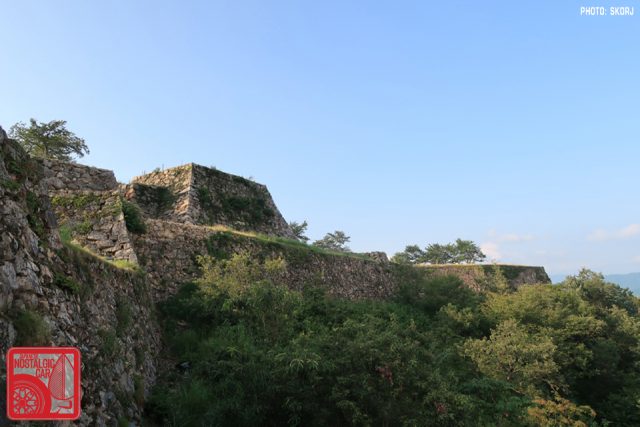
Turning inland for our journey back east to Tokyo, our first destination was in the mountains of Tottori Prefecture — the ruins of Takeda Castle. Built over six-hundred years ago, it was used for 100 years or more before being abandoned. While the yagura, baileys, and keep have disappeared, the remaining rock walls and access paths are all still on the mountain.

For those traveling by rail, the local train stops in a suitably period shotengai and residential area, with one of the castle access trails leading up the mountain straight from the station exit. Very convenient.

Arriving late afternoon, and with the heat of the 86-degree day finally cooling, we hiked to the site and, with the sun going down, found it one of the most spectacular ruins sites we have visited, easily up there with our previous favorite of the Takatori castle ruins in Nara Prefecture. The Takeda Castle ruins themselves – notably the rock work and layouts – are not only fascinating but the views out over the valleys from the many outlooks are equally as gorgeous as anything else we’ve seen on this trip thus far. To be continued…
Stay tuned for the next installment of Grand Touring: Chubu and Kinki. In the meantime, in case you missed it, check out Part 01. You can also see our other Grand Touring installments.
Skorj is co-founder of Filmwasters and you can find more of his work at Cars on Film and here on JNC.







Wow…I need to get more control of my fear of heights !!
(Some amazing photos Skorj).
Thanks, it was a great trip, heights and everything…
Your touring articles are incredible, Skorj!
You’re getting me very excited about my trip to Japan next month, only now I wish I could check my AE86, S30, or even ZF2 as baggage on the flight.
You can of course rent an AE86 and a few others for touge runs around Hakone. Provided you have a valid license, foreigners are no problem.
Wait you can really do that? That’s awesome
Another great pictorial travelog. More and more I’m ready for a trip to Japan.
Arigato… Rent a car, and get out into the countryside!
Once again, thoroughly enjoying this Grand Touring series. Looking forward to the next.
As an aside, interesting to see the Swift. It strikes me that the recent generations of Swift are the spiritual successor to the Honda Civics of the 1990s – perhaps not quite as light or powerful in their most potent forms, but compact, fun to drive and affordable. I’ve driven the current Swift Sport – it really is a lot of fun. If Suzuki had still been around in the US it’d surely be hugely popular with younger drivers.
The Swift Sport is very popular here too, suspect for the reasons you note. That, and it’s not a bad looking modern car either.
Love the photos!